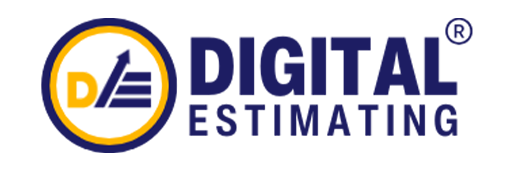Quantity takeoffs are essential for making decisions in construction. They are very important to the project’s goals and needs. Quantity takeoff must be done, regardless of the job’s size. The amount and quality of takeoff data can make or break a project. You must manage data well for it because wrong cost estimates affect the whole building chain.
What Is A Quantity Takeoff?
Quantity takeoff in construction uses models and plans to estimate the amount of work. When a cost estimator looks at drawings and plans to determine how much a building project will cost, this is called construction takeoff. There are several names for quantity takeoffs, and many people use them all the same way. Some names are:
- Estimates for building
- Estimation of materials
- Takeoffs of materials
- Things that matter
- Surveying with a number
- Figuring out takeoff times
- Takeoffs for earthwork
The Importance Of Quantity Takeoffs
The precision of the quantity takeoff affects the cost of building. We will now talk about number takeoffs.
- Cost tracking: It helps you make choices and stay on budget by showing you how much you need to spend on building. The correct number of takeoffs allowed for unexpected costs.
- Communication: Everything in the building is based on cost. Each client wants to get the most money out of their deal. Giving clients accurate cost figures makes communication better. This makes clients trust you more. The client will keep track of how much the project costs.
- Getting more bids: Look into it and make cost predictions to beat your competitors and get the right bids. A worker who always gives accurate takeoffs works quickly and will get more bids. Even though they are annoying, number takeoffs can win more bids when analyzed.
- Managing your time: Due to quantity takeoffs, project budgets and client-contractor decisions are affected. Choosing a provider is hard, but correct takeoffs save time fixing mistakes. Cost overruns keep projects on track, so everything runs easily.
Types Of Quantity Takeoff
Quantity takeoffs in the building business have changed because of technology. There is still a human side to takeoffs. As you can see below, we have two big takeoffs. Both manually and digitally perform takeoffs.
Manual Takeoffs
The first form of material takeoff. Construction estimators use manual takeoff when they need cost estimate tools, even when they have Excel or Microsoft Word. You must look at the contract drawings, paperwork, scope of work, and requirements for simple manual estimates. Based on these papers, the estimator figures out the right amount of work to build a structure. The estimator must read the project plans and ensure they fit the requirements.
Pros Of Manual Takeoffs
There are some benefits to digital takeoffs over physical ones, but something else can replace a cost estimator. Some advantages of controlled takeoffs are:
- Gets useful information from experienced cost estimators.
- It checks digital takeoffs very well.
Cons Of Manual Takeoff
Here are the things that handtakeoffs can’t do:
- Manual takeoffs could be faster, which means you lose time when you put numbers by hand into a spreadsheet.
- The accuracy is lower than with digital takeoffs.
Digital Takeoffs
Digital takeoffs using computer and database programs were new when they were first introduced, but now the building industry uses them. It works better and faster than human ones. People who digitize pictures measure them and put data into computer programs so digital takeoffs can be done. They can scan pictures of any size. A trained professional must apply cost-based outcomes in software programs because digital takeoffs are challenging to understand.
Pros Of Digital Takeoffs
- Digital takeoffs are more accurate than ones done by hand. Their knowledge comes from the designs, which makes things more complicated. The cost estimate shows that they saw everything.
- This lowers the labor cost for quantity takeoff and gives the contractor more time to look at other choices. Perfect digital takeoff and landing.
- Digital takeoffs don’t need as much specific knowledge as manual ones. People who do manual cost estimates need to be able to read plans and drawings well. The program has built-in routines that can solve drawings and do complex calculations.
Cons Of Digital Takeoff
Here are some problems with automatic takeoff:
- The drawings that are used determine how well this process works. If estimates, counts, or measurements are wrong, digital takeoffs might not be right.
- It can be hard to scan drawings that are too big. The digitizer is very big, so the data must be ready immediately.
Who Is Involved In It?
All front-end project planners should do it. It starts during preconstruction and bidding so that a reasonable contract can be made with the correct information. Number-crunching the project’s prices and materials is the first step, whether big or small. Architects, builders, cost estimators, and engineers do quantity takeoffs. Accurate bids help contractors start work on a job. Depending on the type of project, managing the number of takeoffs may require more people. Among these are:
- Master planners for cities
- People who fix up or build homes for people
- Engineers who work with train transportation
- The grass cutters
- People who build roads
- Contractors for utilities
To estimate costs, you need skill, patience, and knowledge. It is very important for project ideas and greatly affects its success.
What Does It Include?
It’s math to do quantity takeoffs. Values and numbers must be taken from the input side and turned into quantities on the output side. One can determine the overall cost by adding the base amount to the labor, equipment, and overhead costs. Quantity surveyors need help turning two-dimensional plans into three-dimensional pictures and making takeoffs. Here are some examples of quantity takeoff rates
- Unit counting: Unit counting is an easy task to do during takeoff. Cost estimators plan projects by keeping track of the costs of each unit.
- Linear length: For pipes, steel, and wood, this is specific to the material. Unit length is used to figure out value instead of unit size because it’s hard to figure out the unit size for these things. Cost estimators figure out the gross cost weight and unit length together.
- Surface area: Like the masonry case, figuring out surface area is two-dimensional. Cost estimators use length and width to figure out the surface area.
- Weight is an important factor in determining how much shipping costs. When you measure takeoffs, you usually include steel tonnes and backfill weight.
- Cubic volume: Quantity launching has to do with three dimensions.
What Isn’t There in a Quantity Takeoff?
To avoid making mistakes with the amount of takeoff, the estimator should know which materials should not be counted. Some information that isn’t part of the number of takeoffs:
- Costs of transportation
- How much does it cost to load and unload?
- Building a roof
- Waste and elements that overlap
- Taking down the forms


